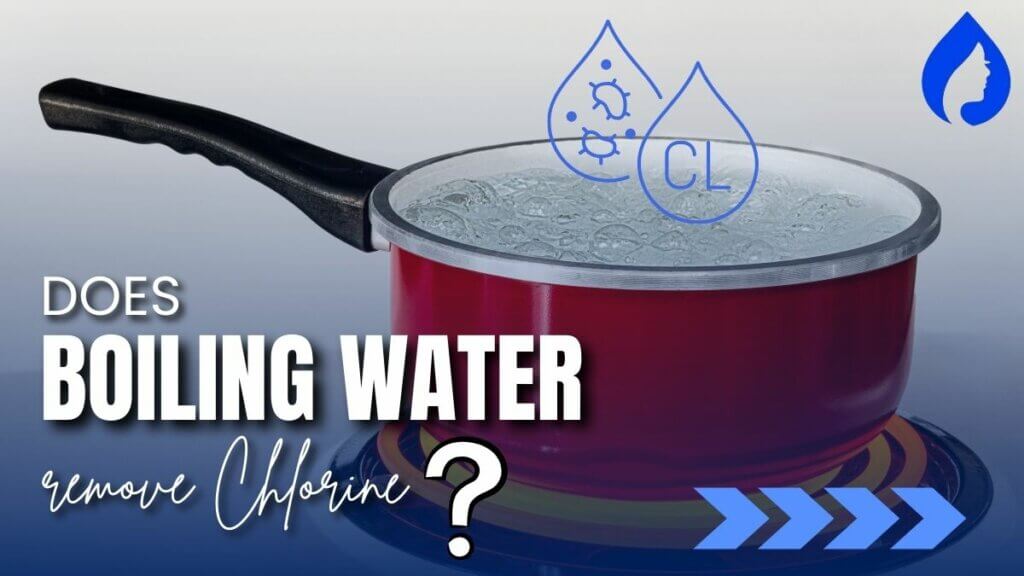
Yes, boiling your tap water for 20 minutes can remove chlorine and its unpleasant taste and smell, but there are some shortcomings in the process:
Continue reading for a detailed guide on how boiling water removes chlorine in water and other better ways to remove the smelly chemical.
🥛 Can You Boil Chlorine Out of Water?
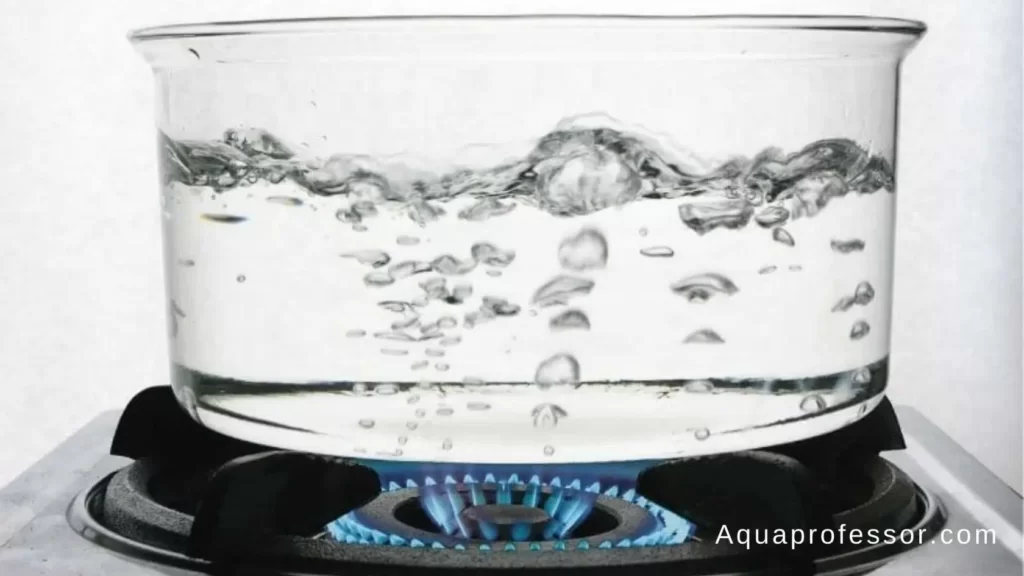
Boiling removes chlorine. So, if you boil chlorinated tap water in your home, the amount of chlorine will significantly decrease if not completely removed.
💡In Fact
Boiling water eliminates all kinds of dissolved gas from the water, including chlorine, oxygen, nitrogen, and CO2 (degassing).
However, once the boiled tap water cools down, it reabsorbs those dissolved gasses from the atmosphere except chlorine (as it doesn’t hover in the air like the other dissolved gasses).
To boil chlorine water, you have to expose it to 212°F heat. The reason is that high temperature snatches the water’s capability to hold chlorine and forces the chlorine and the water to evaporate.
Also Read: Does Boiling Water Remove Lead?
🤔 How Much Chlorine Does Boiling Remove?
Boiling ten gallons of chlorine water for 4 minutes eliminates one milligram of chlorine. So, to remove a large quantity of chlorine from your drinking water, you need to boil chlorinated water in separate batches for quite a long time.
However, the boiling’s effectiveness depends upon the water’s surface area. Therefore, the chlorine evaporates fast when you boil your tap water in a large pot instead of a narrow vessel.
The only way to test how much chlorine is removed is through a use-at-home water test kit or test strips from tapscore.
🔎 Can Boiling Remove Chloramine and Fluoride?
As mentioned earlier, the boiling process doesn’t remove chloramine and fluoride from water significantly. It can only remove free chlorine from your tap water. This is because chloramine and fluoride have relatively lower vapor pressure than chlorine.
So, boiling tap water comprising fluoride increases the fluoride concentration in the water instead of eliminating it. The most effective methods for removing fluoride, chlorine, and chloramine from water are distillation and installing water purification systems like RO (reverse osmosis).
Also Read: Is Chlorine Found in Well Water?
🚰 What Is the Best Way to Remove Chlorine From Tap Water?
Since boiling water is not the quickest and most practical method for removing chlorine from water, we have listed five simple processes that will remove chlorine from your tap water efficiently-
🔄 Reverse Osmosis
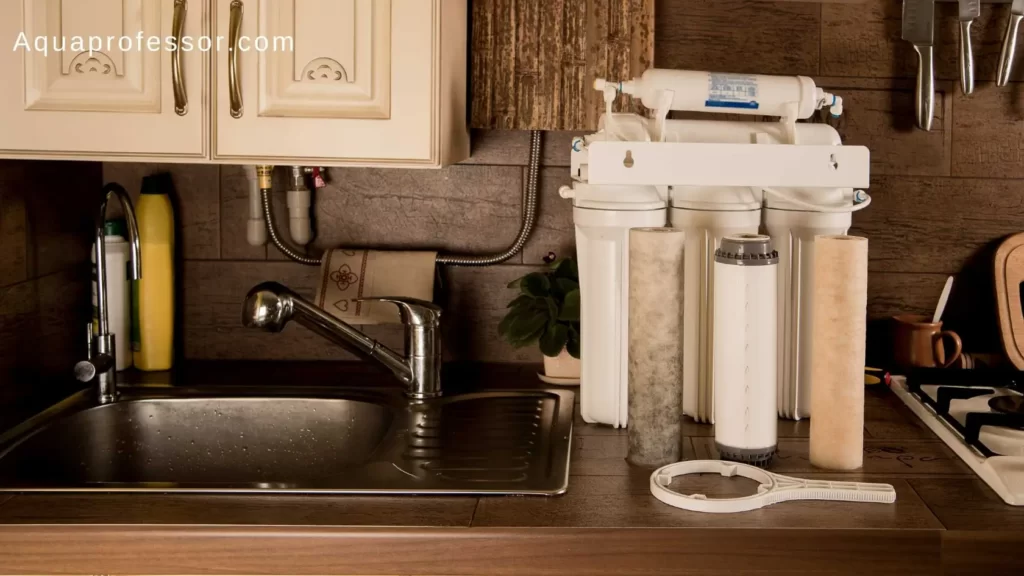
If there is any best remedy for removing chlorine from water, it’s the reverse osmosis process. Besides chlorine, it eliminates several other contaminants from your tap water and makes it fit for drinking. A reverse osmosis systems comprise several water filters-
Here’s how it works-
In addition to excess chlorine removal, the Reverse Osmosis filtration system is ideal for chloramine removal and other heavy metals. However, some of the downsides of the RO water system are-
Also Read: Does Boiling Water Remove Minerals?
⏫ Distillation Process
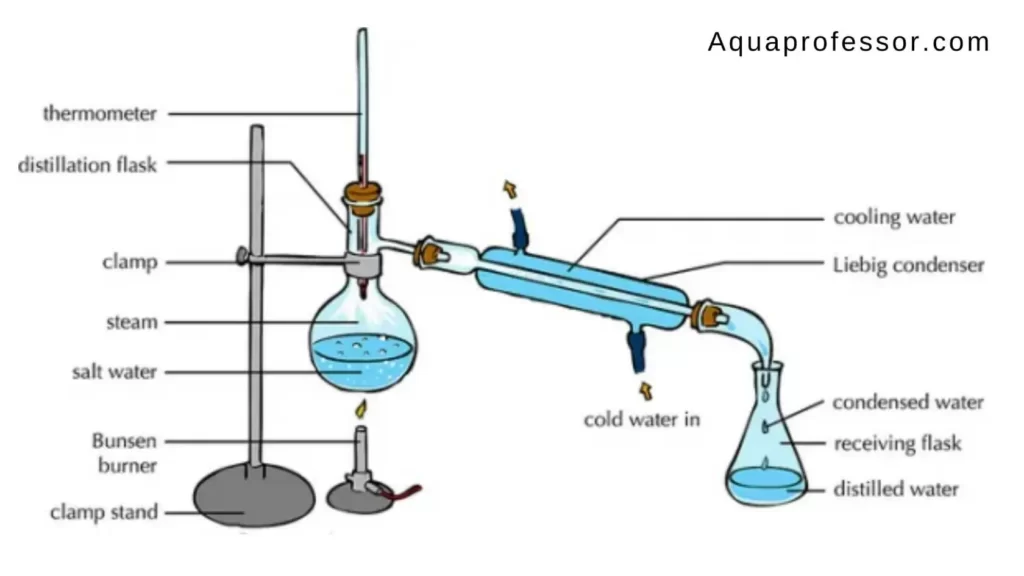
In the distillation process, chlorinated tap water is boiled as boiling removes chlorine. On heating water, the chlorine gets vaporized with water vapor and can’t get back into its former liquid form (because the distiller traps it).
💡 Here’s More:
A distiller comprises a chamber where the tap water is first boiled. As soon as the water vaporizes, the vapors rise and pass through a passageway, where they cool down.
Next, the cooled-down chlorine vapors and other impurities are condensed in a separate compartment.
Most distillers comprise a charcoal filter that efficiently removes chlorine, various impurities, and other harmful substances from tap water, to give us distilled water/dechlorinated water.
Though effective, this method for chlorine removal using charcoal filters can take up to 6 hours to purify only 1 gallon of tap water.
⚫ Carbon Filtration
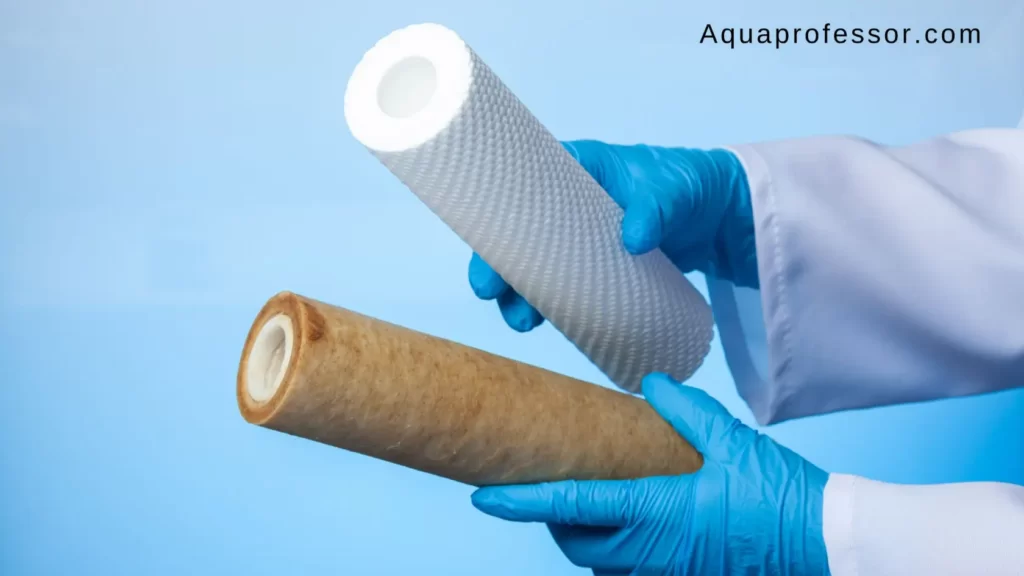
In contrast to RO filters, you can install carbon block filters for whole-house filtration. However, they can also be installed individually as a water pitcher, faucets, and kitchen sink filters.
In the case of whole-house tank-based water systems, a carbon media filtration system comes to help.
The carbon filtration systems involve carbon filters, which are of 3 types-
Note: Activated carbon doesn’t eliminate chloramine from your faucet water.
🔆 UV Light
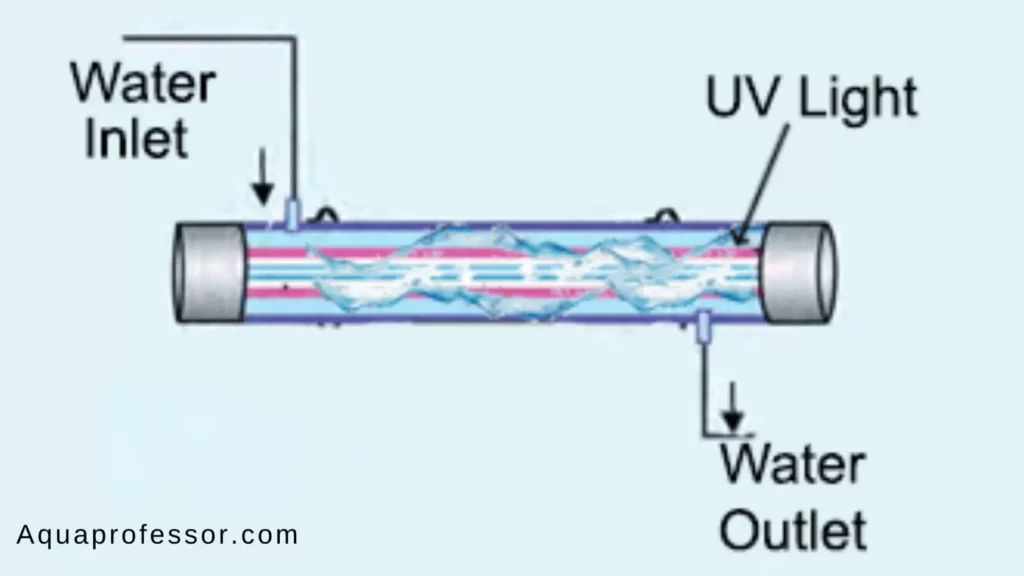
Effective for killing bacteria and other toxic substances in water, Ultraviolet (UV) light exposure is also helpful for eliminating chlorine (when its wavelength ranges from 180 nm to 400 nm).
You can install the at-home Ultra Violet purification lights to purify your house’s water system.
For any standalone water treatment or post-treatment water (after the water is already treated through a whole home system, such as a water softener), a Ultraviolet light lamp may come to your help.
⏫ Evaporation
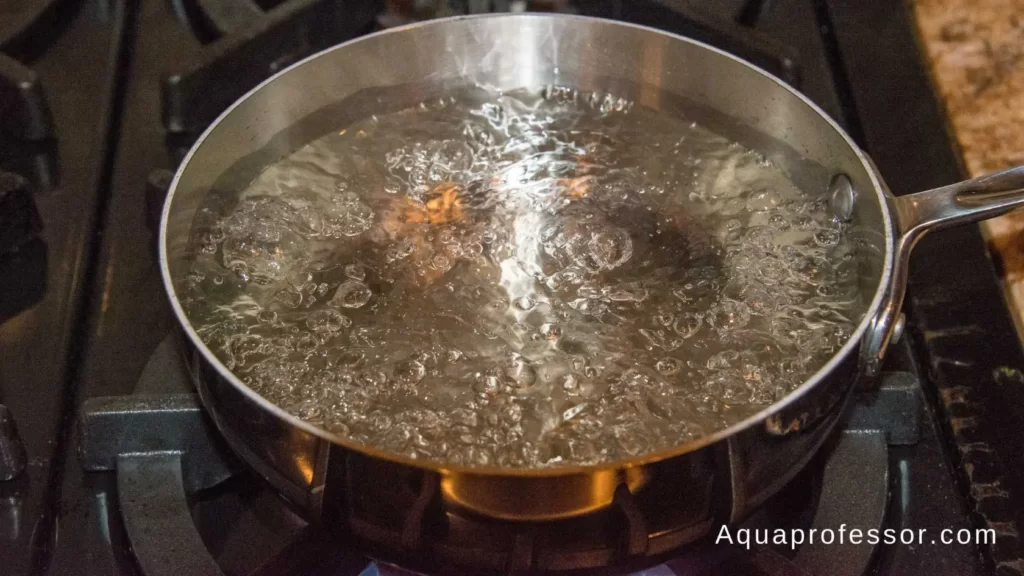
The evaporation process for chlorine removal is easy and inexpensive. However, it’s a slow process that may take overnight to complete the job.
Also, the process is acceptable for low volumes of water only. This dechlorination process doesn’t remove chloramine.
The idea behind this process is that warmer water discharges dissolved gasses like chlorine faster than cold water. For evaporation of chlorine from the water-
💡 For evaporation of chlorine from the water-
1) Keep a bucket containing chlorinated water uncovered before air for the entire night.
2) Aerate the water using a bubbler so that the process speeds.
If you want to dechlorinate water for drinking/brewing purposes or aquariums, evaporation is an excellent choice.
🧐 Does Boiling Water Remove Chlorine FAQs
Should you remove chlorine from drinking water?
Yes, we should eliminate more than 4 ppm of level of chlorine in drinking water. This is because the toxin chlorine contents: THMs (trihalomethanes) present in chlorine may severely endanger or damage your health by causing asthma, heart ailments, bladder cancer, etc.
Besides these health risks, even the low and safe chlorine level (from 1 ppm onwards) in your drinking water may also evoke a bad taste and smell, thus discouraging you from intaking the water.
What are the negative effects of chloramine in water?
Drinking water comprising chloramines at high levels may lead to.
-Irritation in eyes and nose
-Anemia
-Pain or distress in your stomach
Other adverse effects of chloramine in tap water are-
-High corrosion of pipes resulting in lead and copper leaching from pipes/solder.
-Water distribution system’s nitrification, resulting in the residual disinfectant loss.
-Deterioration of the flapper valves of toilet tanks.
How long does it take to boil water to remove chlorine?
To remove chlorine, boil tap water for at least 15 to 20 minutes. After boiling the water, pour the pure water into a clean steel bottle or container and keep the water in your refrigerator.
How to remove chlorine from water naturally?
You can reduce chlorine concentration naturally from your tap water by:
-Keeping the chlorinated water in an open container in the open air overnight to allow the chlorine gas to evaporate.
-Adding lemon juice to the chlorinated tap water (as its acid has the potential to neutralize chlorine)
-Adding zeolite minerals to the tap water
Other than these methods, you can also opt for any other effective method like distillation, carbon filtration, UV exposure, RO filtration, or boiling to eliminate chlorine compounds from your tap water or decrease your water’s levels of chlorine.
Why is chlorine added to water even though it is toxic?
Municipal water supplies or authorities add chlorine to the tap water (water chlorination) to kill harmful bacteria, viruses, and parasites in the water so that the water becomes safe for drinking.
Its harmful health effects start showing when present above four ppm in the tap water though you can start getting the weird smell from 1 ppm.
Adarsh is a Health & Nutrition Sciences graduate with expertise in environmental health. He is associated with ventures like Glacier Fresh Filter and Simpure Filter Systems. Through Aqua Professor, he intends to provide helpful information to every home to help them make smarter decisions.
